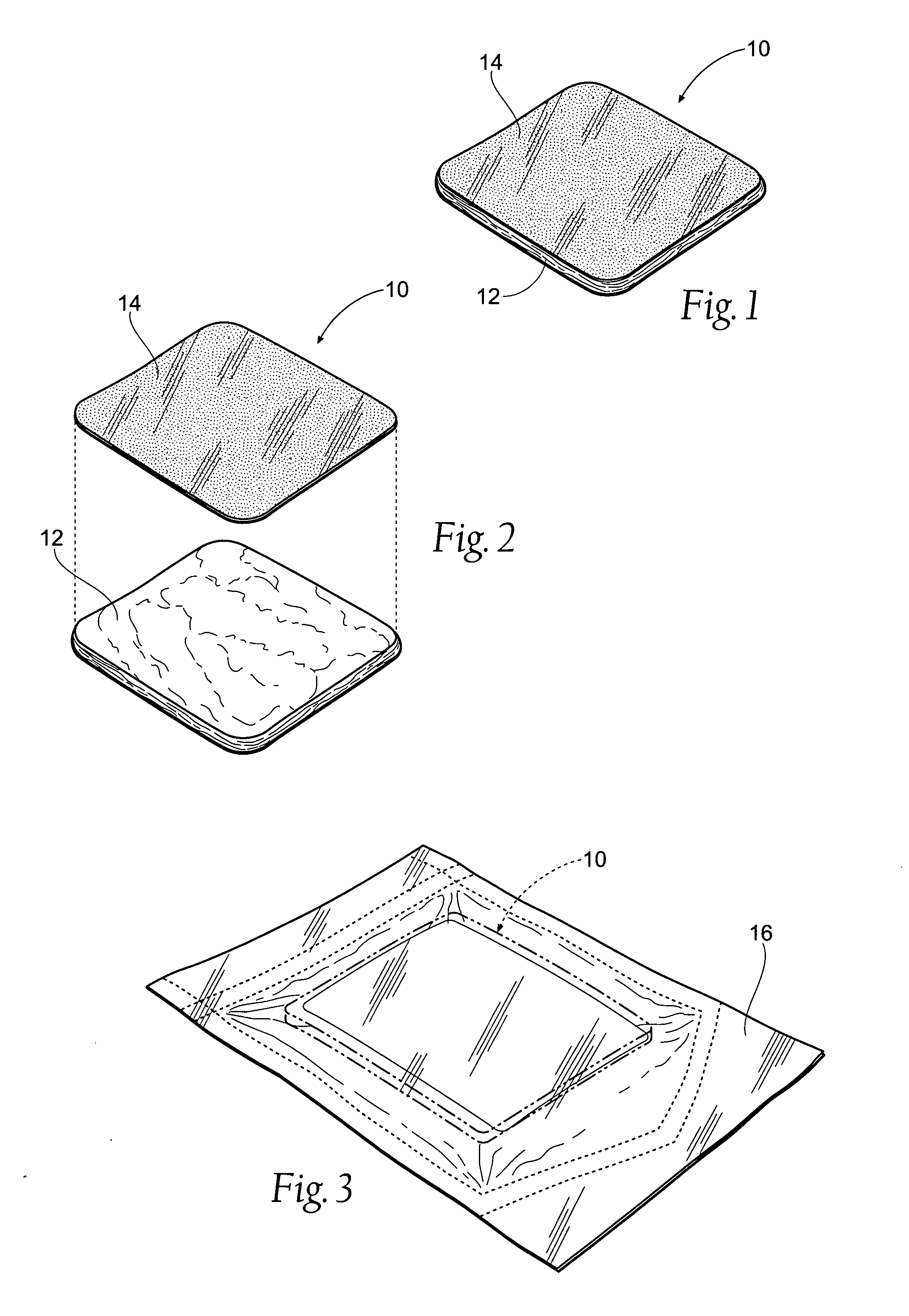Antimicrobial barriers, systems, and methods formed from hydrophilic polymer structures such as chistosan
a technology of hydrophilic polymer structure and antimicrobial barrier, which is applied in the field of antimicrobial barrier, systems and methods formed from hydrophilic polymer structure such as chistosan, can solve the problems of insufficient adhesive properties to serve any practical purpose, inability to meet the needs of patients, etc., to achieve the effect of improving flexibility and compliance, and improving flexibility and complian
- Summary
- Abstract
- Description
- Claims
- Application Information
AI Technical Summary
Benefits of technology
Problems solved by technology
Method used
Image
Examples
examples 3 and 4
III. Further Indications and Configurations for Hydrophilic Polymer Structures
[0061] A. Anti-Microbial Barriers
examples 5 and 6
IV. Conclusion
[0062] Although the disclosure hereof is detailed and exact to enable those skilled in the art to practice the invention, the physical embodiments herein disclosed merely exemplify the invention which may be embodied in other specific structures. While the preferred embodiment has been described, the details may be changed without departing from the invention, which is defined by the claims.
[0063] I. Tissue Dressing Pad Assembly
[0064] A. Overview
[0065]FIG. 1 shows an antimicrobial barrier pad assembly 10. In use, the antimicrobial barrier pad assembly 10 is capable of adhering to tissue in the presence of blood, or body fluids, or moisture. The antimicrobial barrier pad assembly 10 can be used to stanch, seal, and / or stabilize a site of tissue injury, or tissue trauma, or tissue access (e.g., a catheter or feeding tube) against bleeding, fluid seepage or weeping, or other forms of fluid loss. The tissue site treated can comprise, e.g., arterial and / or venous bleed...
example 1
Usage Action Reports
[0092] Action reports by combat medics in operations in and during freedom operations in Afghanistan and Iraq have shown successful clinical utility for the dressing pad assemblies without adverse effects. The US Army Institute for Surgical Research at Fort Sam Houston in Texas evaluated the dressing pad assembly 10 in trauma models with severe life threatening bleeding and compared this dressing to standard 4×4 inch cotton gauze dressings. The antimicrobial barrier pad assembly 10 significantly decreased blood loss and decreased resuscitative fluid requirements. Survival at one hour was increased in the group to which the antimicrobial barrier pad assembly 10 was applied, compared to the cotton gauze survival group. Combat medics have successfully treated bullet wounds, shrapnel, land mine and other injuries, when conventional wound dressings have failed.
C. Manufacture of the Tissue Dressing Pad Assembly
[0093] A desirable methodology for making the antimicro...
PUM
| Property | Measurement | Unit |
|---|---|---|
| density | aaaaa | aaaaa |
| size | aaaaa | aaaaa |
| density | aaaaa | aaaaa |
Abstract
Description
Claims
Application Information
 Login to View More
Login to View More - R&D
- Intellectual Property
- Life Sciences
- Materials
- Tech Scout
- Unparalleled Data Quality
- Higher Quality Content
- 60% Fewer Hallucinations
Browse by: Latest US Patents, China's latest patents, Technical Efficacy Thesaurus, Application Domain, Technology Topic, Popular Technical Reports.
© 2025 PatSnap. All rights reserved.Legal|Privacy policy|Modern Slavery Act Transparency Statement|Sitemap|About US| Contact US: help@patsnap.com



